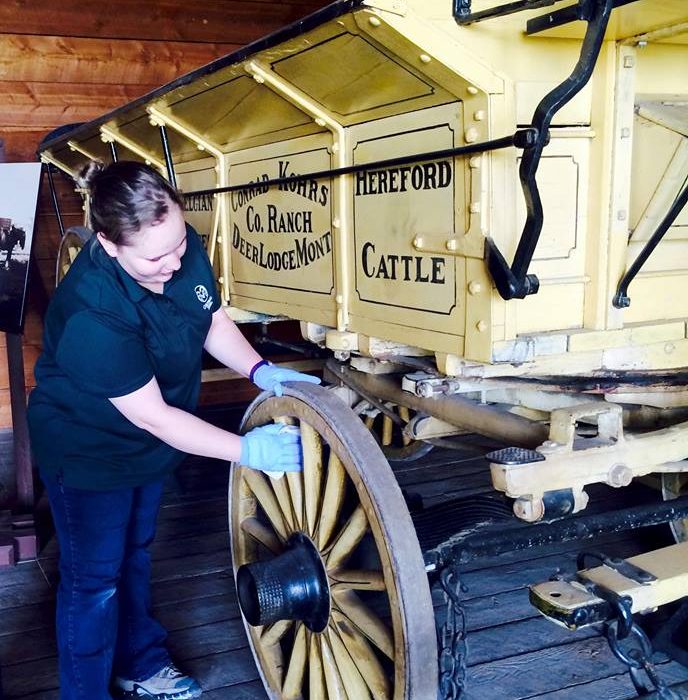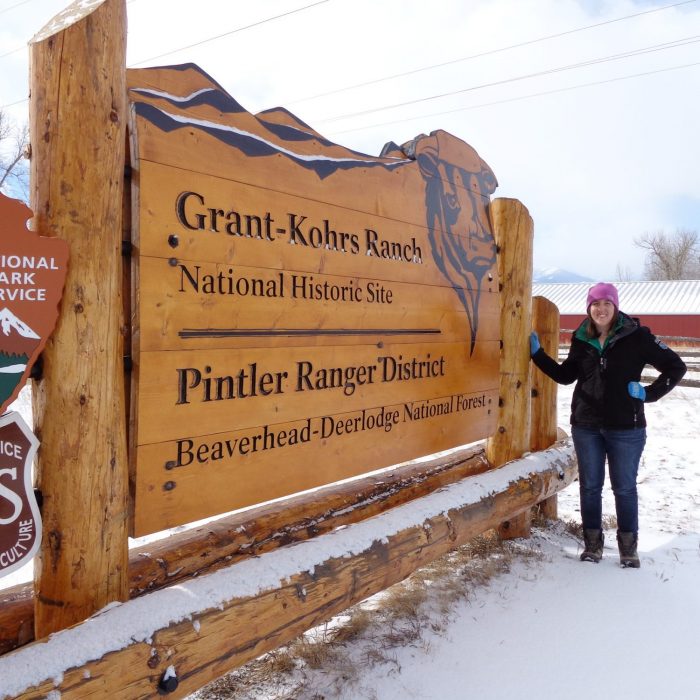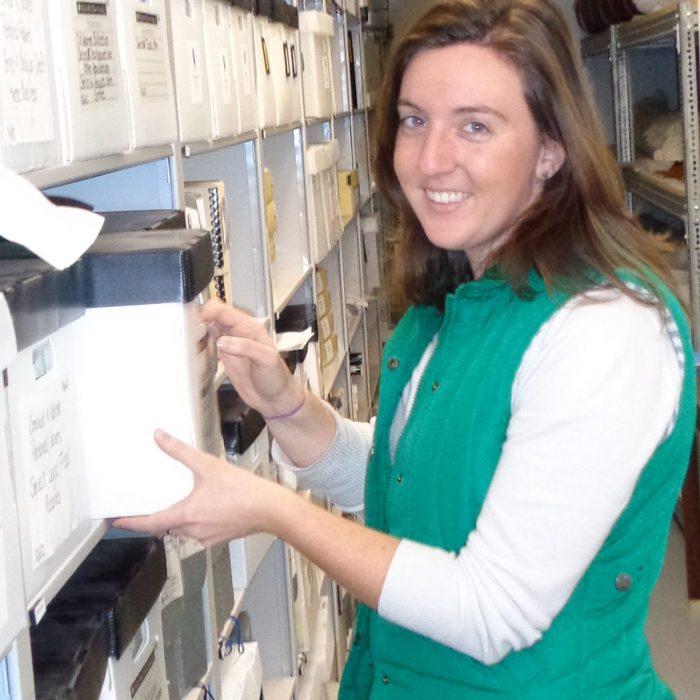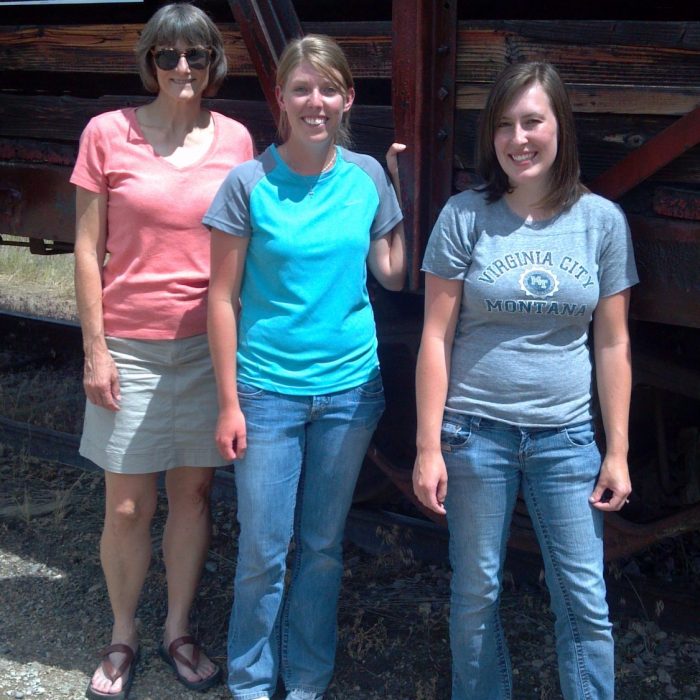Museum & Archives Projects
The Public and Environmental History Center partners with a variety of institutions and agencies to provide summer internships to Museum Studies students and to provide museum and archives management expertise to entities seeking to preserve, catalog, and digitize artifacts, photographs, paper records, and other historic material. Below are descriptions of projects in museums and archives undertaken by the PEHC. Contact us to discover how we can partner with you on museum and archives management projects.
Museum Collections Management Projects
Cataloging and Preserving Collections Internship
Partner: Yellowstone National Park
Project Principal Investigator: Dr. Janet Ore
Interns: Sam Iven (2016), Kelsey Matson (2016), Cassandra Bumgarner (2015), Rachel Crooks (2015)
Timeline: 2015-
This three-year project involves cataloging and preserving collections from Yellowstone National Park’s backlog to make them accessible to researchers. The backlog includes 17,000 history objects (furniture, souvenirs, clothing, and architectural elements) and 2,100 natural history specimens. These collections document the cultural and natural history of the world’s first national park and are housed in the Yellowstone Heritage and Research Center (HRC) in Gardiner, Montana. Interns catalog the objects into the park’s collections database, photograph them, and rehouse them using archival materials to preserve the collections and make them accessible to researchers.
Summer Museum Internships
Partner: Grant-Kohrs Ranch National Historic Site
Project Principal Investigator: Dr. Janet Ore
Interns: Shannon Kelly (2016), Katrina Cotter (2015), Katelyn Weber (2014), Lori Nohner (2013), Jenny Deichman (2012), Janell Nelson Byczkowski (2012), Nellie Gulick (2011), Sam Iven (2011), Sarah Tisdale (2010), Michelle Hansen (2009), Alex Hernandez (2009), Megan Koeman (2009), Tyler Welch (2008)
Timeline: summers, 2008-
This highly successful annual summer internship program allows students to work alongside museum staff at Grant-Kohrs Ranch National Historic Site. Interns implement museum preventative maintenance protocols to preserve collections in exhibit and storage areas, and improve access to collections information for the public and staff. Interns assist in preservation and maintenance tasks for collections (including cleaning, storage, and environmental monitoring), inventory and catalog collections, and improve digital access to collections.
Archives Management Projects
Exhibit Installation Project
Partner: National Wildlife Research Center
Project Principal Investigator: Dr. Sarah Payne
Researcher: Kailee Swolley
Timeline: 2016
This project will produce a physical exhibit using National Wildlife Research Center (NWRC) archival images, materials, and artifacts; an online exhibit using the same theme as the physical exhibit; and will involve the digitization of items (posters, images, and reports) for inclusion in the online exhibit. The PLHC will facilitate and train a student to complete work with NWRC oversight. Creation of the physical exhibit will include working in conjunction with the NWRC Archivist and Archives Technician to create an exhibit theme including identifying a topic and corresponding outreach materials; creating exhibit panels and text; and installing the exhibit. The creation of online exhibit using the same theme as the physical exhibit will include using ContentDM collections software to create the exhibit, and creating corresponding exhibit home page content for the APHIS/NWRC website.
Historic Structures Records Management Project
Partner: Yellowstone National Park
Project
Principal Investigator: Dr. Sarah Payne
Timeline: 2016-
This project will assist Yellowstone National Park with processing paper and electronic records, photographs, plans, and documents for over 800 historic structures. These files are in a cultural resources file room at Yellowstone Center for Resources at Mammoth Hot Springs, and relate to historic structure and district development, List of Classified Structure updates on structure condition, National Register status, historic preservation plans, and post-historic alterations. Many of these records are unorganized, poorly described, and difficult to find. Researchers will assess these records for their long-term value, prepare record organization plans (file plans), and identify, organize, arrange, describe, and preserve the records. Once identified, arranged, preserved, and made accessible, these records will help YELL staff secure Yellowstone’s cultural heritage, meet the National Historic Preservation Act, preserve the park’s administrative record surrounding these historic properties, support reusability of research data and results, and contribute to the effective management of the park’s historic structures. Additionally, arranged and described records will be available to non-NPS users, including researchers, media, and members of the public.



